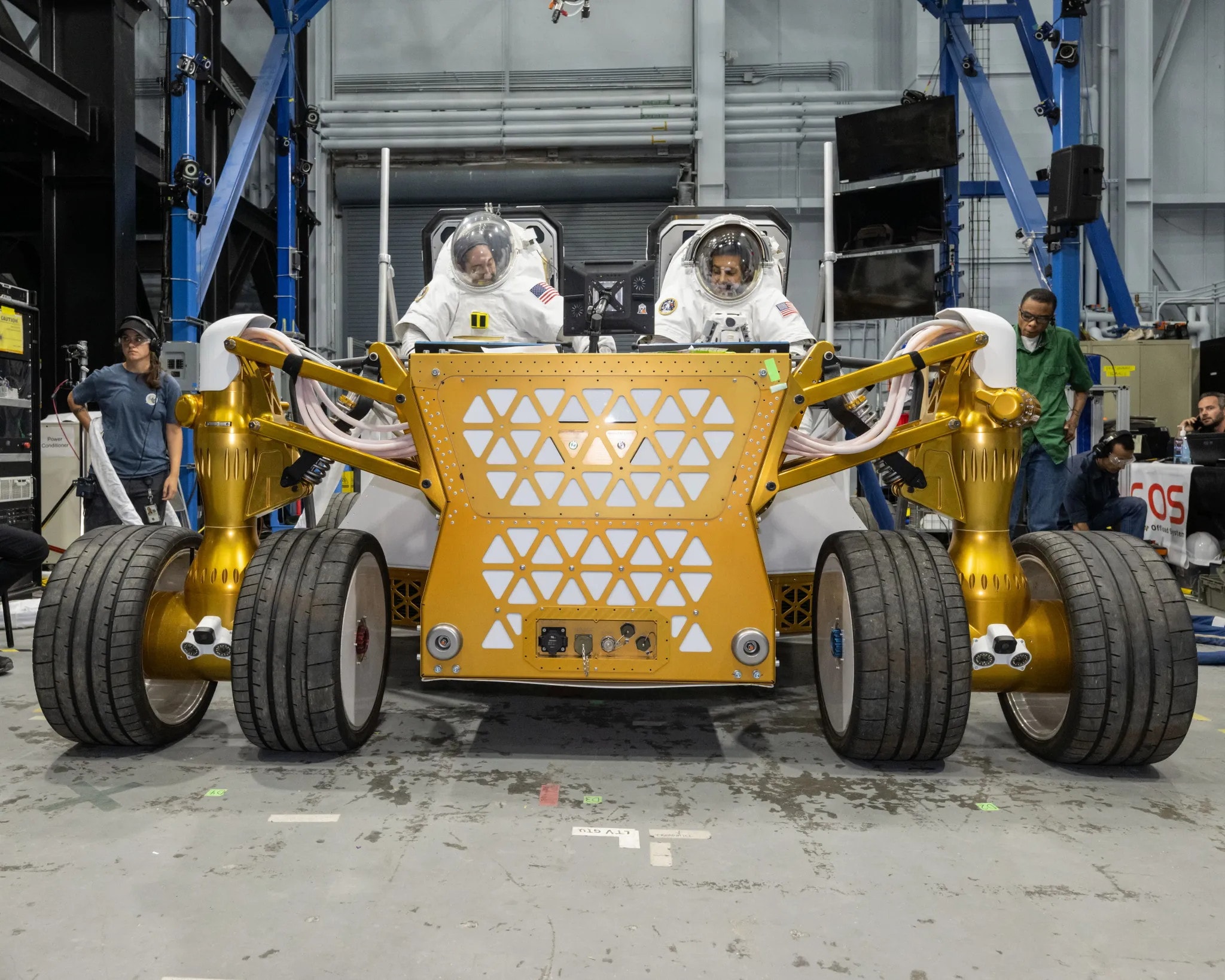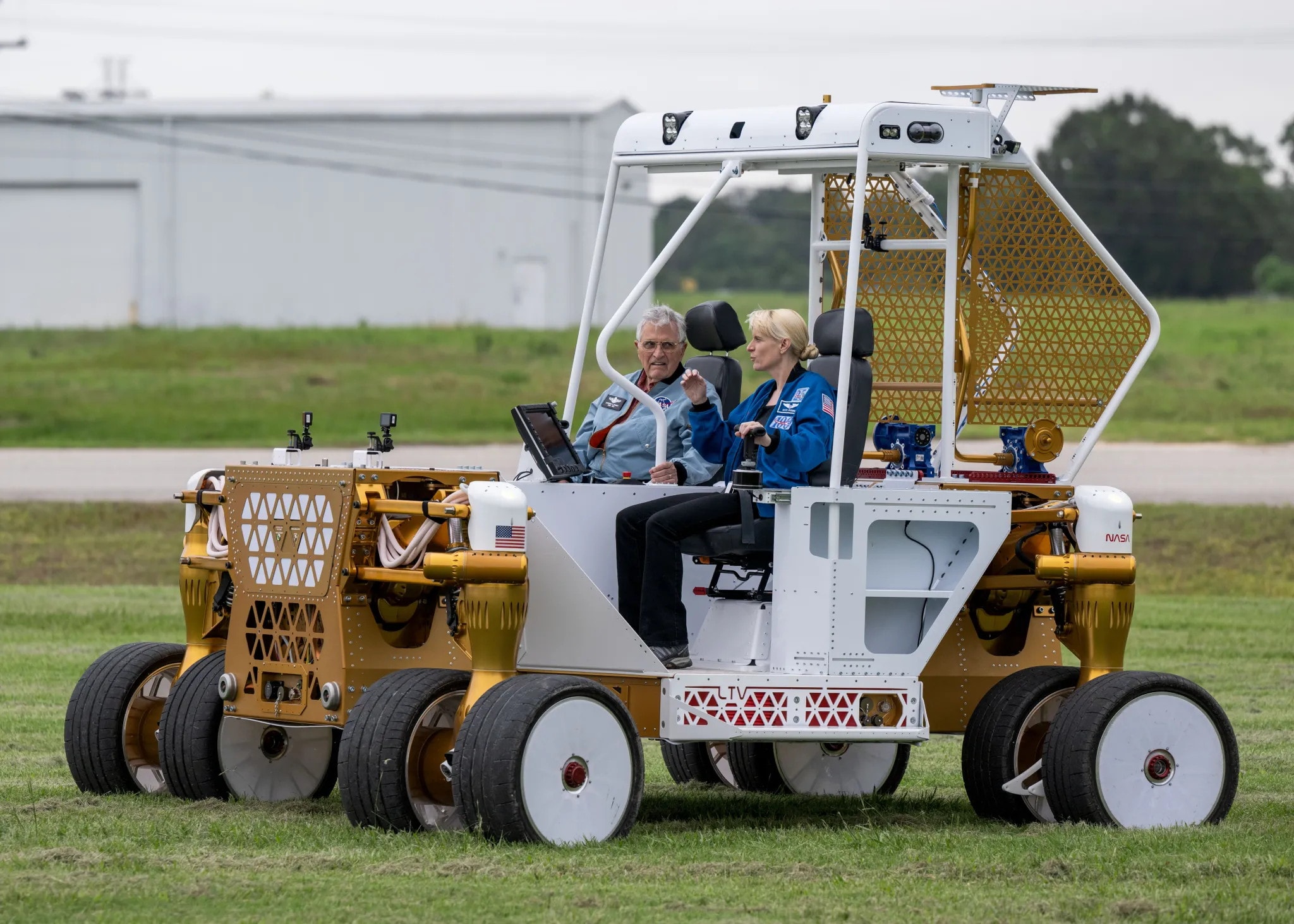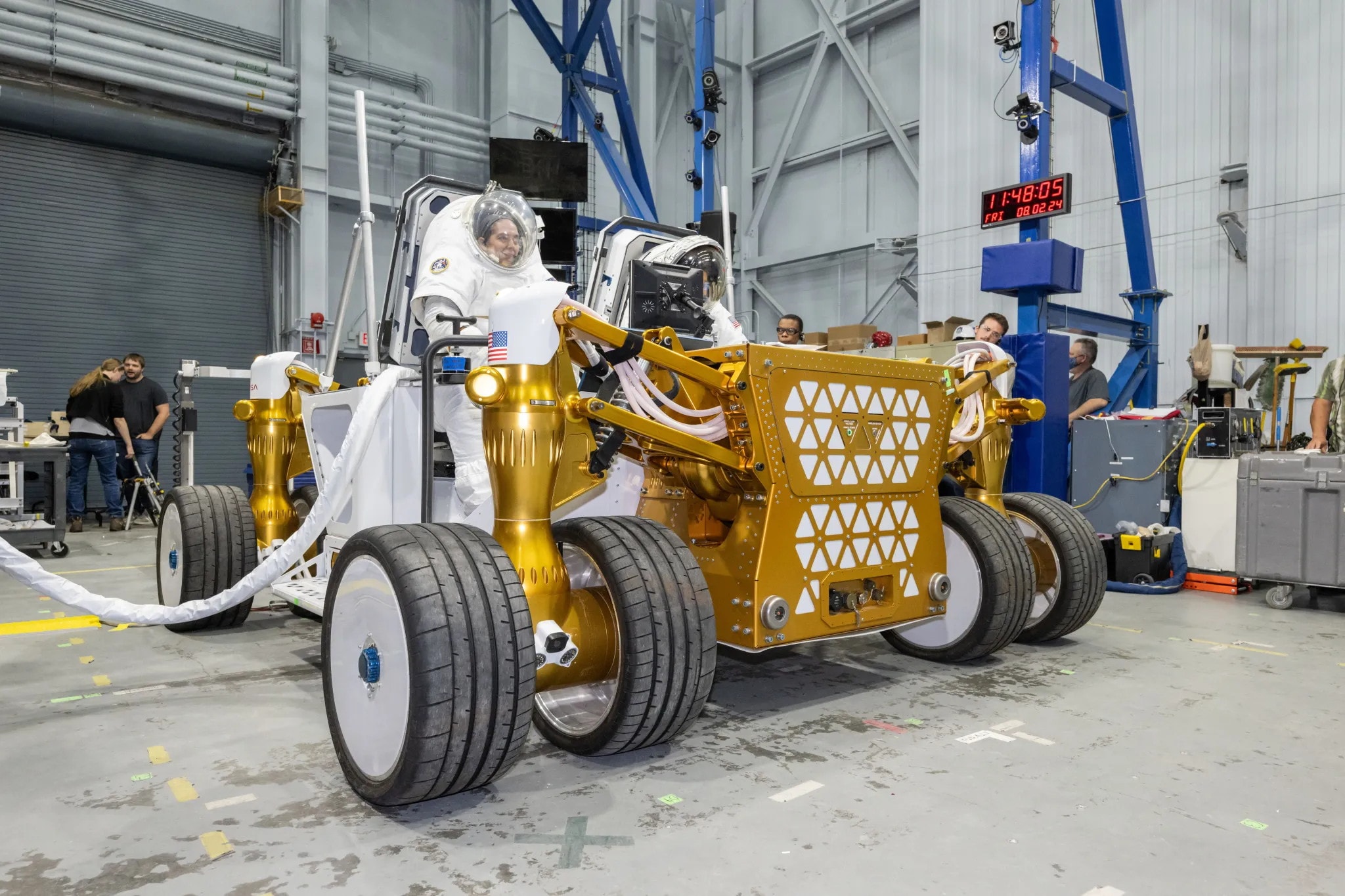In April 2024, NASA selected three companies to develop the Lunar Terrain Vehicle (LTV) for the Artemis program. While the designs are impressive, none are physical prototypes yet. The LTV will be used to transport astronauts on the Moon starting with Artemis V in 2030.
NASA has specific requirements for the LTV, including carrying two astronauts, remote operation, various drive modes, autonomy, and self leveling. To ensure the LTV meets these requirements, NASA’s Johnson Space Center is using a Ground Test Unit (GTU).
The GTU is an eight wheeled vehicle that will be tested on Earth to evaluate systems, technologies, and processes before they are incorporated into the actual LTVs. This testing will help identify and address potential issues early in the development process, reducing risks and ensuring the LTV’s reliability and safety.

By subjecting the GTU to rigorous testing under various conditions, NASA can simulate the challenging lunar environment and assess the performance of different components and systems. The GTU’s data will inform the design and engineering decisions for the LTV, allowing NASA to make necessary adjustments and improvements.
This iterative process will help refine the LTV’s capabilities and ensure it is well-suited for the demanding lunar environment. Ultimately, the GTU will play a crucial role in ensuring the success of the Artemis program and the future of human exploration on the Moon. Three companies have been selected to test their lunar rover designs on the newly constructed engineering testbed.
Each company’s rover has unique features, with Lunar Outpost’s Lunar Dawn LTV being the most conventional with its reconfigurable cargo bed and robotic arm. Intuitive Machines’ Moon RACER is more futuristic, resembling a race car, and capable of carrying a significant payload. Venturi Astrolab’s FLEX is the most extreme, featuring deformable wheels and having undergone real world testing.

The engineering testbed will be used to evaluate the performance of these rovers in various scenarios, including rover maintenance, payload integration, and crew compartment design. This testing will be crucial in ensuring the safety and efficiency of future lunar missions.
It remains unclear who will be the first to use the testbed, but all three companies are eager to test their designs and prepare for future lunar missions. The results of these tests will help inform the development of future lunar rovers and exploration strategies.

